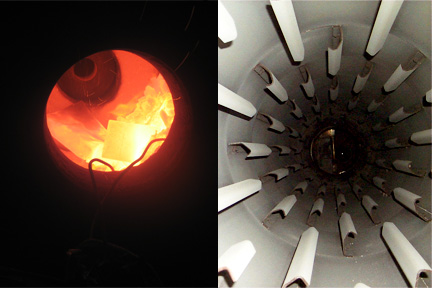When it comes to thermal processing, confusion often arises in choosing between a rotary kiln and rotary dryer.
Although these two types of equipment share similar thermal processing principles, they are used in very different applications:
Rotary dryers are used for drawing moisture out of a material. As such, they typically operate at temperatures between 800º – 1400ºF.
In contrast, rotary kilns are used to cause a chemical reaction or phase change, requiring them to operate at much higher temperatures, typically between 1000º – 3000ºF. Some moisture reduction may occur during processing in a rotary kiln, but this is typically secondary to the primary goal. In other words, while rotary kilns can help to dry a product, their main objective is not in drying, but in heating the material up to the temperatures required to achieve the desired reaction.
As a result, rotary kilns must be designed to withstand much higher temperatures than rotary dryers. Direct-fired kilns, for example, are often refractory lined with a brick or castable lining, which protects the steel shell. Rotary dryers are not typically lined, as they are not operating at such high temperatures.
Indirect rotary kilns and dryers are not normally lined (this would create an additional barrier for heat to pass through), and instead of a steel drum shell, utilize a shell constructed from a temperature-resistant alloy to withstand the temperatures within.
The need for a rotary kiln or dryer depends on the process and material goals. If the goal is simply to dry the material, the rotary dryer is the equipment of choice. If trying to cause a thermally-driven chemical reaction, however, a rotary kiln is necessary.
For more information on rotary dryers or kilns, contact us today!

